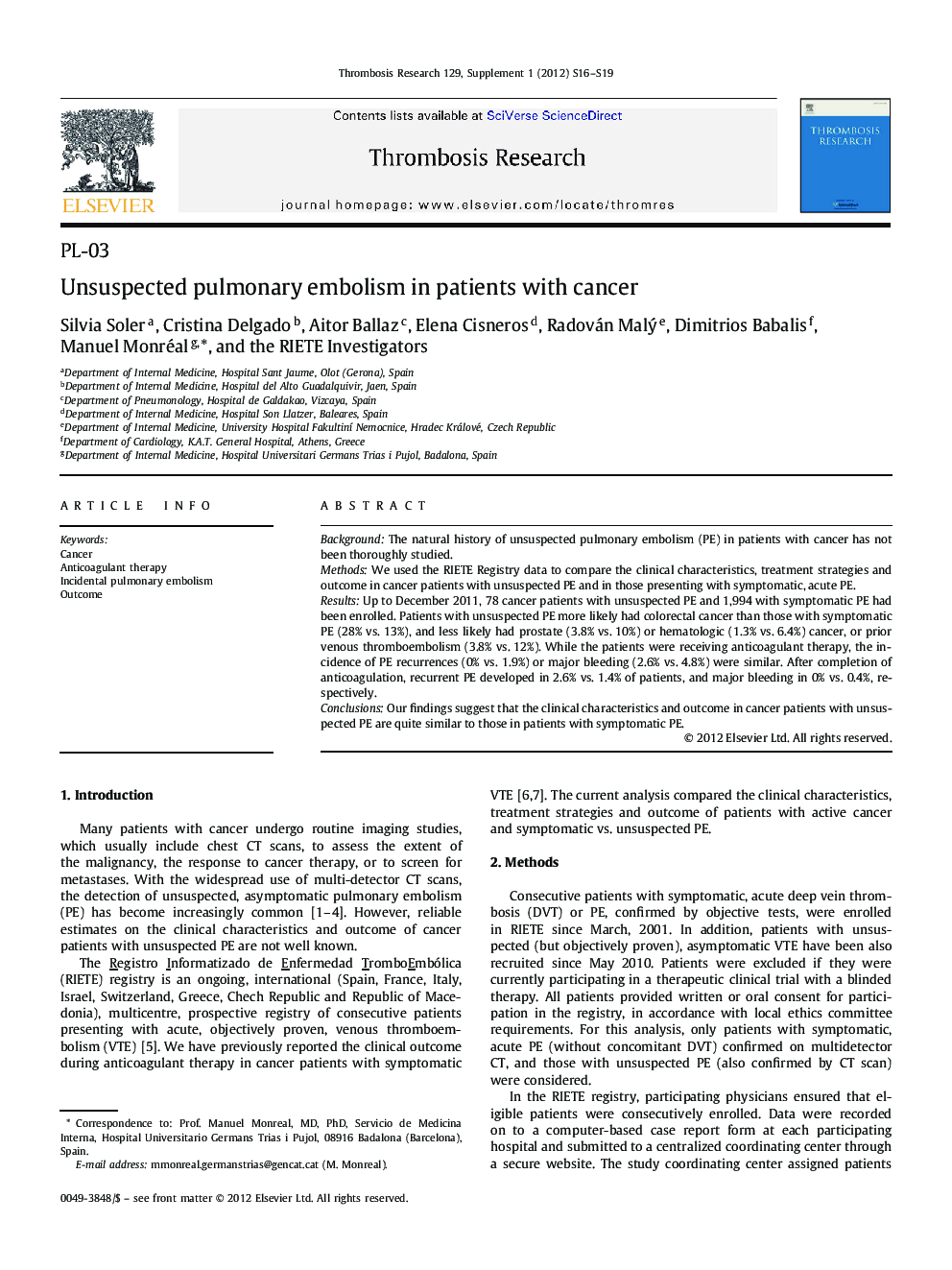| Article ID | Journal | Published Year | Pages | File Type |
|---|---|---|---|---|
| 3028523 | Thrombosis Research | 2012 | 4 Pages |
BackgroundThe natural history of unsuspected pulmonary embolism (PE) in patients with cancer has not been thoroughly studied.MethodsWe used the RIETE Registry data to compare the clinical characteristics, treatment strategies and outcome in cancer patients with unsuspected PE and in those presenting with symptomatic, acute PE.ResultsUp to December 2011, 78 cancer patients with unsuspected PE and 1,994 with symptomatic PE had been enrolled. Patients with unsuspected PE more likely had colorectal cancer than those with symptomatic PE (28% vs. 13%), and less likely had prostate (3.8% vs. 10%) or hematologic (1.3% vs. 6.4%) cancer, or prior venous thromboembolism (3.8% vs. 12%). While the patients were receiving anticoagulant therapy, the incidence of PE recurrences (0% vs. 1.9%) or major bleeding (2.6% vs. 4.8%) were similar. After completion of anticoagulation, recurrent PE developed in 2.6% vs. 1.4% of patients, and major bleeding in 0% vs. 0.4%, respectively.ConclusionsOur findings suggest that the clinical characteristics and outcome in cancer patients with unsuspected PE are quite similar to those in patients with symptomatic PE.
